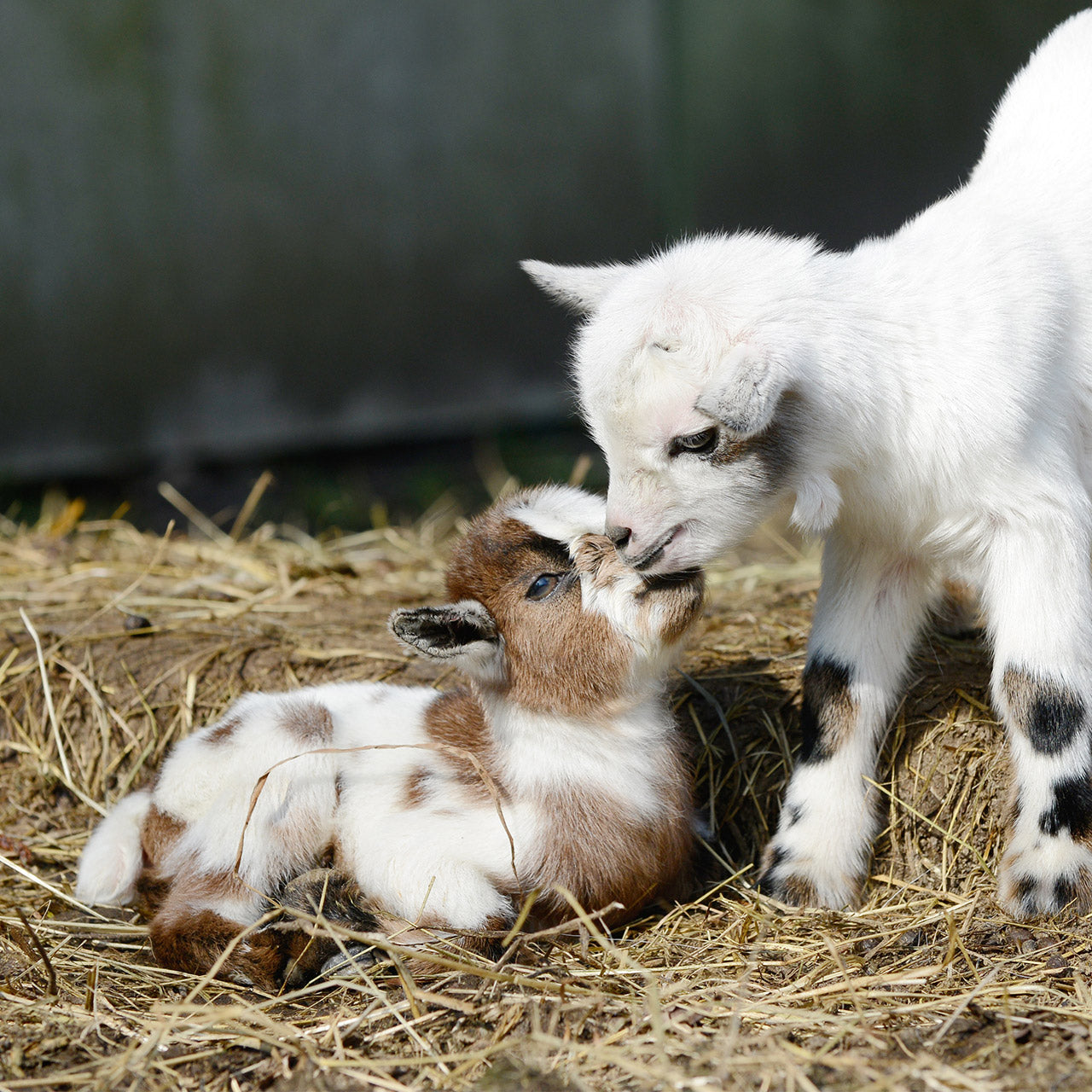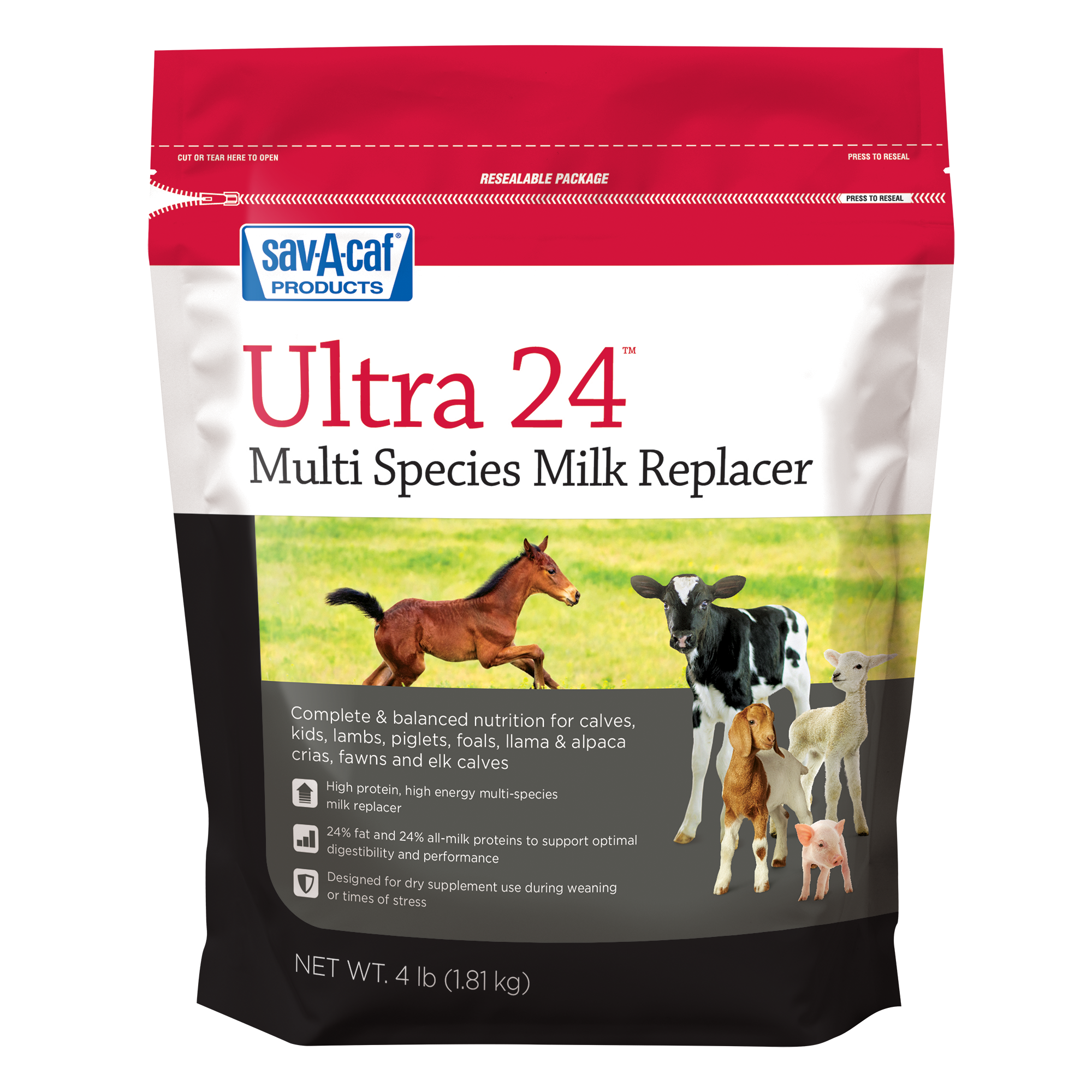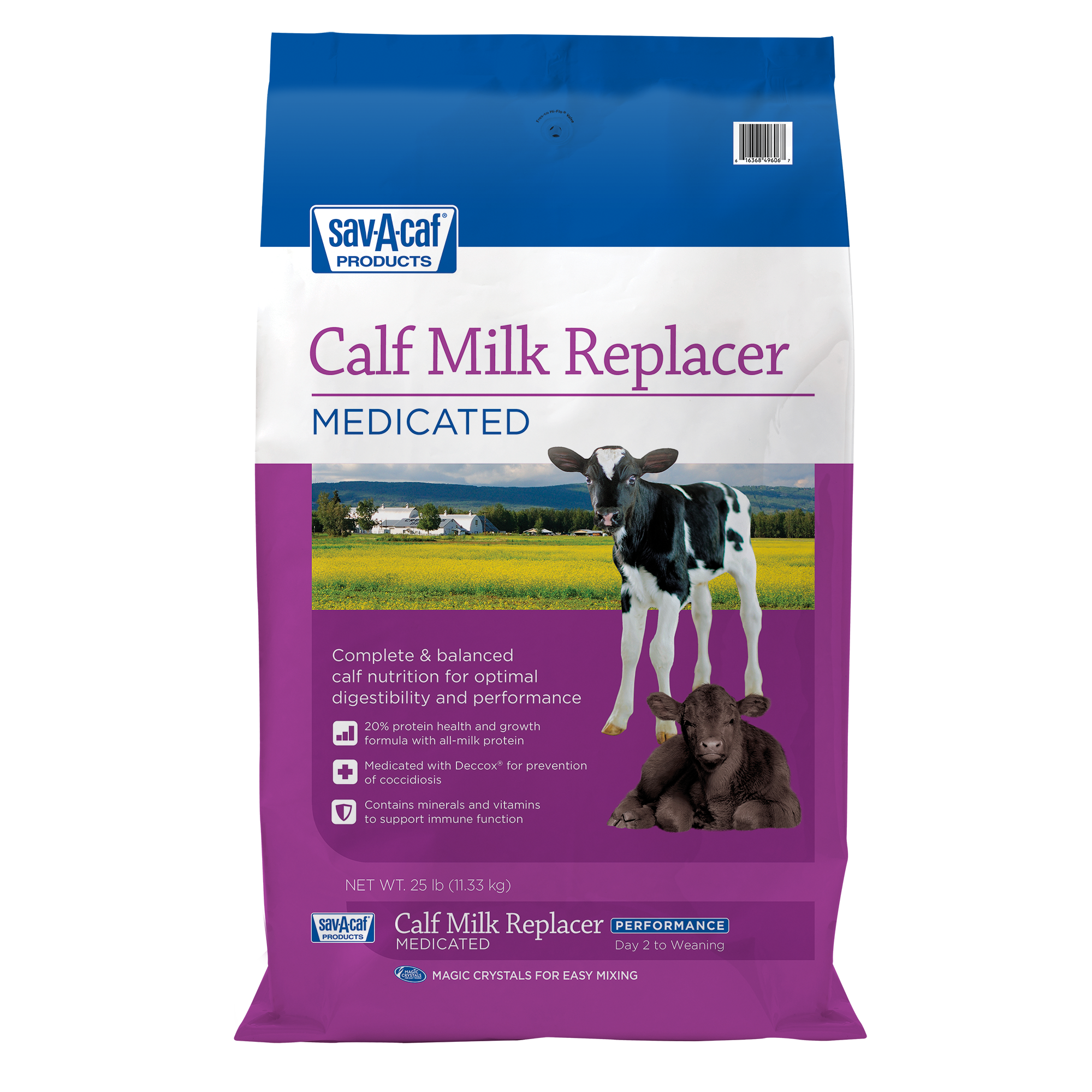
Help goat kids make a smooth transition to life without milk
Like most baby animals, goat kids love milk. When it’s time to take this beloved item off the menu and help them transition to eating dry feed, many goat kids find it challenging. Fortunately, you can make weaning goats less stressful by preparing your goat kids well in advance. Doing so will make the transition much smoother for your little ones.
So when can goats be weaned?
“Goat kids can be weaned off milk or goat milk replacer once they reach 30 pounds and are eating at least one-quarter pound of solid feed per day along with free-choice forage,” says Julian Skip Olson, DVM. “This typically occurs between 21 and 30 days of age. However, goat kids should be assessed individually to see if the transition to dry feed is going well.”
These six tips can help you minimize stress while weaning goats:
1. Get your goats off to a strong start from day one
Proper nutrition beginning at birth goes a long way in preparing baby goats for the weaning process. When not nursing on the doe, feeding a high-quality goat milk replacer specifically formulated for goat kids ensures they are better prepared to tackle the rigors of weaning. A formula containing 23% all-milk protein and 26% fat is recommended to support healthy, growing goat kids.
2. Prepare a safe and clean weaning environment
Set up a weaning pen or pasture with sturdy gates and fences. Consider the use of 4-by-4 woven wire and make sure gates are low to the ground to contain your newly weaned goat kids. Kids should also have access to a clean, well-bedded area to seek shelter from the elements.
If possible, move goat kids into weaning pens several weeks before they are completely weaned. Familiarity will help reduce stress.
It’s best to avoid making big changes simultaneously, like moving goat kids to a new location while also removing milk from the diet. Give goat kids time to adjust to a new environment before stopping milk or milk replacer.
3. Offer plenty of fresh, clean water
A clean, easy-to-access water source is critical. Beyond hydration, water influences the digestion of dry feed in the rumen. It’s also a key part of the kid’s diet and must be readily available at all times to help weaned goats thrive. Water troughs should be no more than 12 inches high to ensure comfortable drinking. Keep water clean and fresh to encourage adequate consumption. Consider feeding electrolytes while weaning goats to support proper fluid intake and an easy transition.
Adding electrolytes to the water for the first couple days post-weaning gives goat kids a boost during what can be a stressful period. Electrolyte supplements containing electrolytes, energy and amino acids are designed to help replenish fluids and lost nutrients, helping goat kids stay hydrated.
4. Make sure goat kids are eating solid feed
Introduce a 16-18% protein creep feed pellet to goat kids at a young age. The sooner kids start eating dry feed the better. Earlier feed consumption allows for more successful rumen development and a seamless transition to weaning. To ensure a balanced diet, pellets are recommended over texturized feeds that goats like to sort.
Don’t forget the roughage. It’s important for keeping the kid's stomachs functioning properly. The rapidly growing kid has high energy requirements. As such, weaned goat kids should munch on high-quality pasture or be offered free-choice hay. Goat kids should also have access to free-choice quality minerals or have them provided in the creep feed.
5. Vaccinate to prevent disease
Prior to weaning, goat kids should receive a CD-T vaccine and booster to protect against enterotoxemia (overeating disease) and tetanus. It’s also wise to deworm goat kids and their mothers twice before weaning. Spring-born kids are especially susceptible to picking up parasites from pasture, which can cause serious problems for immature immune systems. Check kids for parasites and treat as needed.
External parasites, such as lice, are another concern for goats. A rough-looking hair coat or goats scratching themselves with their hooves are indications of lice. Use a pour-on lice treatment solution prior to weaning goats and again at weaning time to help rectify this problem.
Prior to weaning, consult your local veterinarian on animal health management practices and for any disease prevention recommendations.
6. Watch for health issues like coccidiosis
Coccidiosis is a leading cause of illness among goats. The major symptom of this deadly disease is dark, bloody scours. However, goat kids can die from a coccidiosis outbreak before showing any symptoms. Pay special attention to growth, looking for goat kids that have a rough hair coat during or after weaning, as this could signal an outbreak.
It’s common to use feed additives at least two weeks before and after weaning to control coccidia, the protozoa that cause coccidiosis. Adding coccidia treatments to drinking water is another means for controlling coccidiosis. Coccidia is spread through feces, so be sure to keep feed and water troughs extra clean during weaning.
Discuss coccidia control with your veterinarian as part of your animal health plan. A good relationship with your veterinarian can help them become more familiar with your farm and best prepared for emergencies.
Read more tips about feeding goat kids and like My Farm Journey on Facebook and Instagram to stay up-to-date!



